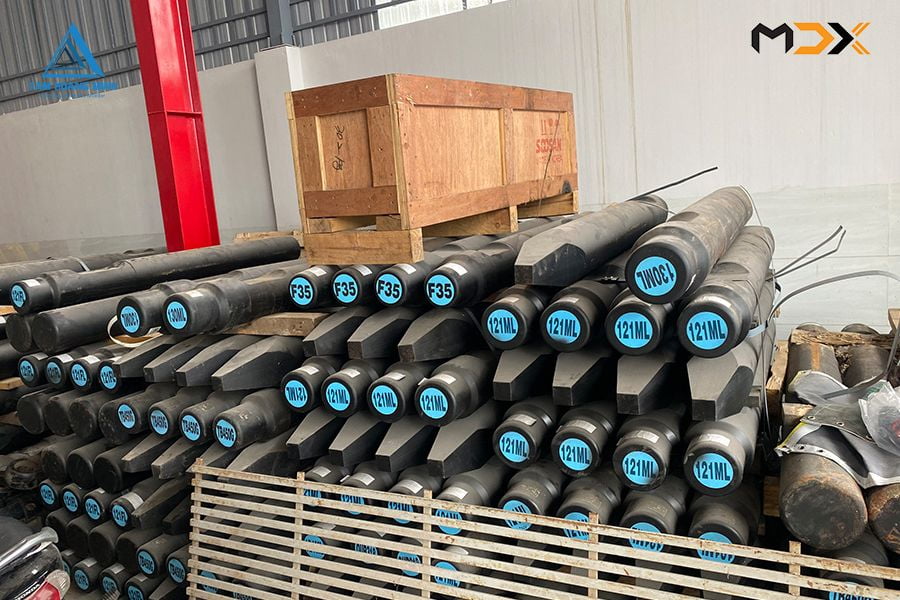-
Your shopping cart is empty!
Your shopping cart is empty!
| Type | Moil Point for Breaker |
| Suitable for | Compatible Excavators with Similar Specs |
| Country of Origin | Korea |
| Condition | New 100% |
| Location | Vietnam |
| Contact | 0985 048 030 |
Hydraulic breaker chisels are also commonly known as concrete chisels, rock chisels, or breaker points.
The chisel, also called a moil point, is an essential part of a hydraulic breaker system mounted on excavators. It helps break down materials quickly and efficiently. As the component directly impacting materials like rock, concrete, brick, and granite, it withstands significant force. Chisels are made from special alloy steels with high hardness to ensure durability and working efficiency.
- Chisel point: The part that directly contacts the material, bearing the brunt of the impact.
- Chisel body: Connects the point to the shank, transmitting force.
- Chisel shank: The part attached to the hydraulic breaker, ensuring a secure connection.
Chisel diameters range from 50 to 150 mm, and chisels are classified based on various factors such as shape, size, material, and application. However, there are generally two main types:
- Pointed chisel: Used for breaking hard materials with flat surfaces.
- Blunt chisel: Used for breaking softer materials with uneven surfaces.
- Wide chisel: Used for breaking large areas of material.
- Special chisel: Used for specialized demolition work, such as breaking reinforced concrete.
- Excavators: These are the most common equipment using hydraulic breakers and chisels.
- Loaders: Some loaders can also be equipped with hydraulic breakers.
Chisels need replacement when:
- Worn or broken: After a period of use, the chisel point will wear, break, or deform, reducing work efficiency.
- Loss of hardness: When the chisel loses hardness, its ability to break materials decreases significantly.
- Bent or warped: A bent chisel reduces impact force and can damage other parts of the hydraulic breaker.
The chisel is installed into the hydraulic breaker at a 90-degree angle. Correct installation increases work efficiency and extends the chisel's lifespan.
- Improved work efficiency: Chisels help break hard materials quickly and easily, saving time and effort.
- Increased labor productivity: Chisels accelerate the construction process, saving costs.
- Ensured safety: Chisels minimize risks for workers compared to manual material breaking methods.
When choosing a chisel, consider the following factors:
- Identify the type of material to be broken: Choose the appropriate chisel type.
- Excavator size: Choose a chisel size that matches the excavator to ensure efficiency.
- Material quality: Choose a chisel made from high-quality alloy steel with high hardness and durability.
Conclusion
Chisels are indispensable tools in construction projects. With advantages like high efficiency, increased labor productivity, and safety, they have become an optimal solution for breaking hard materials. However, for effective and safe use, choose quality products and install them correctly.
Contact
Contact
Contact

